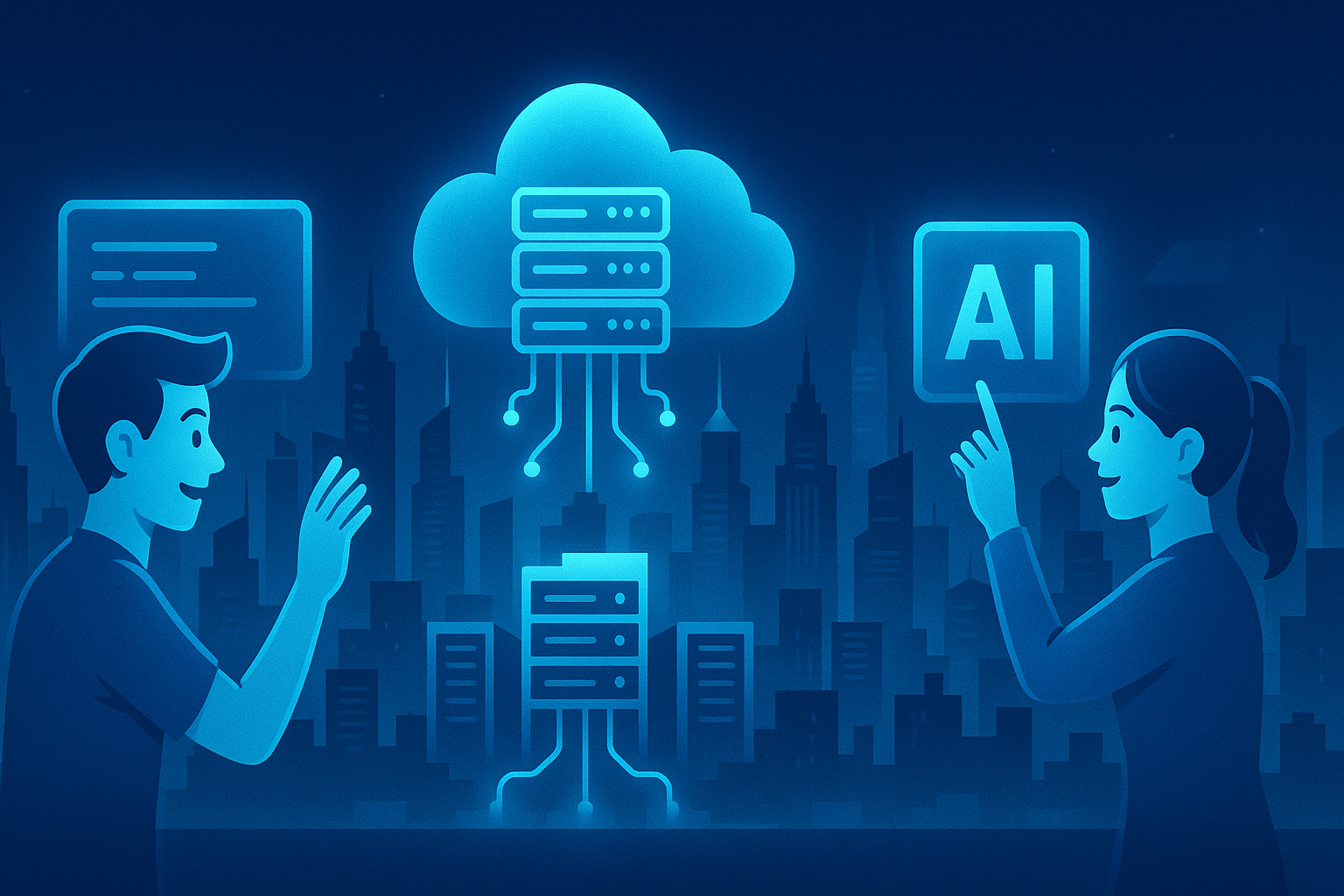Published
- 4 min read
Transforming Cloud Deployment with AI-Driven Tools
Cloud_Deployment_with_AI-Driven_Tools.DaP65wQt_QlsQ.jpg)
Cloud deployment is at the core of modern software delivery, powering everything from agile startups to global enterprises. Yet despite decades of innovation, many deployment workflows remain heavily manual, prone to human error, and inefficient at scale.
Today, AI-driven deployment tools are leading a quiet but profound transformation in how cloud environments are built, managed, and optimised. By embedding intelligence into every step of the deployment lifecycle, these tools are redefining speed, reliability, and scalability for development teams worldwide.
The Challenges of Traditional Cloud Deployment
 In a traditional deployment setup, teams face several recurring challenges:
In a traditional deployment setup, teams face several recurring challenges:
- Manual Configuration: Infrastructure setup, environment variables, scaling policies, and rollback strategies often require hands-on intervention.
- Operational Overhead: Managing clusters, monitoring performance, handling outages, and maintaining uptime consumes significant engineering hours.
- Delayed Rollouts: Even with CI/CD pipelines, bottlenecks in testing, scaling, and region-specific deployments slow down time-to-market.
- Cost Inefficiencies: Static infrastructure planning leads to underutilization or unexpected spikes in cloud costs.
These challenges are magnified for startups and agile teams where speed, focus, and cost control are critical to survival and growth.
How AI Is Reshaping Cloud Deployment
 AI-driven cloud deployment tools introduce a new model, one where much of the decision-making, scaling, and optimisation happens automatically, without manual scripts or configurations.
AI-driven cloud deployment tools introduce a new model, one where much of the decision-making, scaling, and optimisation happens automatically, without manual scripts or configurations.
Key transformations include:
- Automated Environment Detection: Tools can now auto-detect application types, frameworks, and dependencies, tailoring the deployment process accordingly.
- Predictive Scaling: Rather than reacting to traffic spikes, AI can forecast demand patterns and scale resources in advance.
- Smart Rollbacks and Recovery: Intelligent systems monitor deployments for anomalies and can trigger rollback or healing workflows proactively.
- Region Optimisation: Based on application needs and user geography, AI suggests the best deployment regions to minimise latency and cost.
- Integrated Observability: Metrics, logs, and alerts are no longer bolt-on extras but built directly into the deployment workflow with AI insights to drive faster diagnosis and resolution.
These innovations dramatically reduce manual overhead, speed up release cycles, and create more resilient applications.
Real-World Application: Intelligent Platforms Like Kuberns
 Platforms such as Kuberns exemplify the shift toward intelligent, AI-powered deployment ecosystems.
Platforms such as Kuberns exemplify the shift toward intelligent, AI-powered deployment ecosystems.
Kuberns brings together several critical capabilities:
- Intelligent Deployment Orchestration: From GitHub repository to live service, the platform streamlines setup with smart defaults and auto-configuration.
- Built-In Monitoring and Health Tracking: Metrics and logs are automatically captured and visualised, helping teams maintain visibility without external tools.
- Traffic-Aware Scaling: Kuberns can anticipate application load and suggest scaling adjustments before performance degrades.
- Seamless Multi-Region Deployment: Deploy applications globally with minimal manual configuration, using AI to recommend optimal locations.
Unlike traditional Paas solutions that still require a considerable degree of manual work and external integrations, platforms like Kuberns integrate intelligence into every layer, reducing operational complexity while improving agility.
The Benefits for Development Teams
 Teams adopting AI-driven deployment solutions benefit in several ways:
Teams adopting AI-driven deployment solutions benefit in several ways:
- Reduced Time-to-Market: Faster deployments mean quicker product iterations and user feedback cycles.
- Enhanced Focus: Developers can spend more time writing code and less time managing infrastructure.
- Increased Resilience: Automated rollback and monitoring features reduce downtime and service interruptions.
- Cost Efficiency: Smarter scaling and optimised resource usage translate to lower cloud bills over time.
- Scalability Without Complexity: Teams can grow applications from local markets to global audiences without needing to re-architect their deployment pipelines.
Looking Ahead: The Future of AI-Enhanced Deployment
 As AI capabilities continue to evolve, the future of cloud deployment will likely include:
As AI capabilities continue to evolve, the future of cloud deployment will likely include:
- Self-Optimising Architectures: Systems that continuously reconfigure themselves for better performance and efficiency.
- Intent-Based Deployment: Developers will define the desired outcomes, and AI will determine the optimal deployment strategy.
- Predictive Failure Analysis: Platforms will detect weak points before they cause outages, allowing preventive measures.
- Seamless Multi-Cloud Deployments: AI will enable applications to move fluidly across cloud providers based on cost, performance, and user demand.
These advancements will further lower the barriers to entry for startups, reduce operational risks for enterprises, and accelerate innovation across industries.
Conclusion
The transformation of cloud deployment through AI is not a distant possibility. It is already reshaping how modern applications are launched and scaled.
For companies seeking to stay competitive, leveraging AI-driven tools like Kuberns offers a path to faster, smarter, and more reliable deployments without the traditional operational burden.
By embracing this new wave of intelligent automation, organisations can focus more on building exceptional products and less on managing the underlying infrastructure, turning cloud deployment from a complex challenge into a strategic advantage.